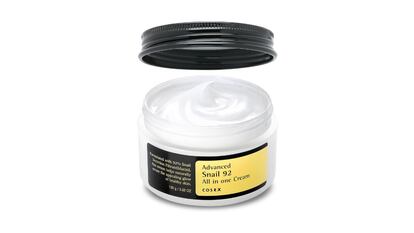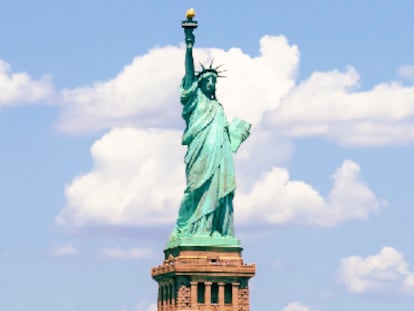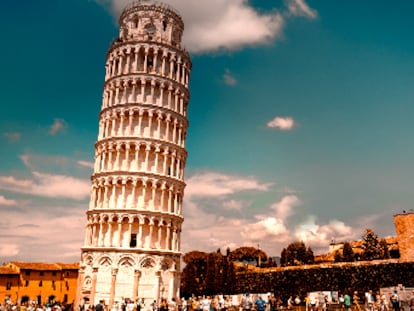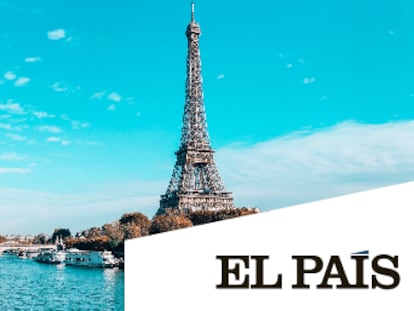Cable en el que jueces sandinistas ponen en libertad a 'narcos' a cambio de dinero
Un despacho de 2006 relata cómo Daniel Ortega financió ilegalmente su regreso a la presidencia de Nicaragua
| ID: | 63040 |
| Date: | 2006-05-05 17:17:00 |
| Origin: | 06MANAGUA1003 |
| Source: | Embassy Managua |
| Classification: | UNCLASSIFIED//FOR OFFICIAL USE ONLY |
| Dunno: | 06MANAGUA1002 |
| Destination: | VZCZCXYZ0011 PP RUEHWEB DE RUEHMU #1003/01 1251717 ZNR UUUUU ZZH P 051717Z MAY 06 FM AMEMBASSY MANAGUA TO RUEHC/SECSTATE WASHDC PRIORITY 6199 INFO RUEHZA/WHA CENTRAL AMERICAN COLLECTIVE RUEHCV/AMEMBASSY CARACAS 0658 RHEFDIA/DIA WASHINGTON DC RUEAIIA/CIA WASHDC RHEHNSC/NSC WASHINGTON DC |
UNCLAS MANAGUA 001003 SIPDIS SENSITIVE SIPDIS DEPARTMENT FOR WHA/CEN PASS TO USAID FOR AA/LAC E.O. 12958: N/A TAGS: PGOV, PREL, KDEM, KCRM, SOCI, ECON, EAID, NU SUBJECT: NICARAGUA'S MOST WANTED PART II: THE CRIMES OF THE SANDINISTAS (FSLN) REF: MANAGUA 1002 (SBU) This is the second in a series of three cables summarizing the crimes and abuses of power committed by Nicaragua's corrupt party bosses and their associates. The first cable focused on Daniel Ortega and his family, while this one centers on the abuses of the Sandinistas more broadly, both when they were in power during the 1980s and subsequently. The third and final cable will focus on Arnoldo Aleman and his family. As noted in reftel, post intends to use the information from these "rap sheets" in discussions with domestic and international interlocutors as a means of reminding Nicaraguan voters and others of the true character of Aleman, Ortega, and the Sandinistas. While the summaries themselves are unclassified, some of the sources of information are SBU. Post will distribute the summaries to appropriate contacts, but not the sources. Post is sending both the summaries and the sources to the Department and other Washington agencies for similar uses. THE RECORD OF THE 1980S FLSN REGIME AND SUBSEQUENT SANDINISTA ABUSES OF POWER - - - - - - - - - - - - - - - - - - - - - - - - - - Rampant FSLN Human Rights Abuses, including Torture, Disappearances, and Murder - - - - - - - - - - - - - - - - - - - - - - - - - - 2. (U) The FSLN regime declared a permanent "state of emergency" and interned and tortured thousands of people at prisons and camps scattered all over Nicaragua. The Sandinista State Security Directorate operated a network of special prisons where those held had no legal rights or protections whatsoever. In the mid-1980s, the regime had over 6500 political prisoners, the largest number in the entire hemisphere. 3. (U) Many prisoners were held for up to two years without ever being charged or facing a judge. The largest torture camp for political prisoners was in what is now the free trade zone near Managua's airport. The regime also ordered numerous murders and disappearances, including the killings of hundreds of Miskitos on the Atlantic coast and the internment of thousands more in concentration camps in 1981 and 1982. These crimes against humanity were ordered by Daniel Ortega, Humberto Ortega, Tomas Borge, Lenin Cerna, and Omar Cabezas, among others. 4. (SBU) Sources: Sandinista declarations on the "state of emergency" and their incarcerations of political prisoners are a matter of public record; the CPDH human rights organization also has tens of thousands of complaints of 1980s rights abuses and on the imprisonment of political prisoners. This information was published in regular reports by the CPDH throughout the 1980s and remains documented in the organization's archives. The State Department's annual Human Rights Reports also documented many of the worst abuses. Many victims remain alive to this day and continue to testify regarding the abuses they suffered. FSLN Wrecks Economy and Sets it back 50 years - - - - - - - - - - - - - - - - - - - - - - - 5. (U) By the 1970s, Nicaragua had developed one of the most advanced economies in Central America, with so many jobs being created that workers from other Central American countries came to Nicaragua seeking employment. Nicaragua was known as the bread basket of the region. When the FSLN came to power in 1979 and began confiscating property (over 170,000 total properties), driving out investors, and setting up a state-run soviet-style economy, it destroyed all the progress that had been made, setting the national economy back at least fifty years. GDP per person declined an average of 5.7 percent per year, exports declined 3 percent per year, and the Sandinistas ran up Nicaragua's external debt to over 10 billion dollars (more than seven times GDP). For comparison's sake, external debt in 1979, when the Sandinistas took power, was only 1.5 billion dollars (97 percent of GDP). 6. (U) Under the Sandinistas, the currency was constantly devalued, hyperinflation reached 33,500 percent in 1988, and production plummeted, forcing Nicaraguans to suffer shortages and rationing of even the most basic goods. Although progress has been made since 1990, the economy has still not fully recovered from FSLN mismanagement. Because of the FSLN, instead of other Central Americans coming to Nicaragua to seek jobs, the country now faces a situation in which hundreds of thousands of its people have had to leave their country to seek jobs elsewhere. 7. (SBU) Sources: Detailed documentation on the decline of the Nicaraguan economy is a matter of public record; all of the information is available in the records of the Nicaraguan Central Bank. Nicaraguans old enough to remember both the pre-Sandinista and the Sandinista economies can also bear witness to the economic devastation caused by the FSLN. Based on analysis of records from numerous government ministries, President Bolanos and his government estimated that the FSLN regime set the Nicaraguan economy back at least 50 years. Censorship and Harassment of the Media - - - - - - - - - - - - - - - - - - - - 8. (U) The FSLN regime eliminated nearly all independent media in Nicaragua, censored all sensitive information, and constantly harassed La Prensa and the two main independent radio stations that survived. Journalists were regularly arrested and held without charge, La Prensa was shut down on numerous occasions, and many journalists and editors were forced into exile. 9. (U) On one occasion, Interior Minister Tomas Borge summoned journalist Jose Castillo Osejo to his home and then personally physically assaulted him. Castillo, currently a National Assembly deputy, was one of the owners of the independent Radio Corporacion, and had often used the station to criticize the FSLN. At the same time, the regime monitored phone calls, opened private mail, and used its control of the media, and its famous literacy campaign, to bombard the Nicaraguan people with communist propaganda. 10. (U) FSLN efforts to harass the media have continued even since the party left power in 1990. In 2006 the Sandinista caucus in the National Assembly rammed through the new Arce Law, named for FSLN National Assembly member Bayardo Arce, its chief advocate. The law significantly reduced the tax exonerations that media outlets may obtain for imported materials and equipment. These tax exonerations helped the print and other media to keep prices low to enable wide access to information. Media outlets reported that the law resulted in significant bureaucratic delays that slowed the importation of needed printing supplies and equipment. 11. (SBU) Sources: Any journalist who lived through this period in Nicaragua or was forced into exile can testify to the effect of FSLN media policies, as Jose Castillo Osejo has done. Police records also document the arrest of journalists, and La Prensa has reported widely on the constant harassment it suffered. The State Department's annual Human Rights Report and complaints filed with the CPDH human rights organization also document FSLN abuses of the media. Promotion of Terrorism and Efforts to Destabilize Neighboring Countries - - - - - - - - - - - - - - - - - - - - - - - - - 12. (U) The FSLN regime was not content to run Nicaragua into the ground, and sought to export its failed communist revolution to all of Nicaragua's neighbors and countries as far away as Argentina. The regime smuggled weapons to leftist guerrillas in El Salvador, Honduras, Guatemala and elsewhere. At the same time, terrorists from all over the world found a safe haven in Nicaragua, and many obtaind Ncragancitizenship. 13. (U) FSLN leaders, including Humberto Ortega, have admitted publicly that leaders of the Argentine leftist terrorist group "Los Montoneros" resided in Nicaragua and engaged in military activities with the FSLN for an extended period in 1979-1981. Humberto Ortega admitted that Fernando Vaca Narvaja, the leader of the group, resided in his house in Managua. 14. (SBU) Sources: Daniel Ortega has publicly admitted many of his terrorist connections, including the fact that he has received elections money from the government of Libya. Many 1980s terrorists still live in Nicaragua and have acquired Nicaraguan citizenship (including at least one prominent member of the Italian Red Brigades). Daniel Ortega publicly associated with many of these individuals in Nicaragua throughout the 1980s. Harassment of the Roman Catholic Church and Civil Society - - - - - - - - - - - - - - - - - - - - - - - - - - - - - 15. (U) The FSLN regularly harassed, arrested, and abused the Catholic Church and civil society. In August 1982 the FSLN set a trap for Monsignor Bismarck Carballo, who ran the Church's independent Radio Corporation by luring him to the home of a woman who claimed to be having domestic problems and needed his help. FSLN thugs assaulted Caballo, stripped him naked and then trotted him in front of the national media waiting outside in a disgusting effort to discredit the priest. In 1983 the FSLN even went so far as to harass Pope John Paul II when he visited Nicaragua. The regime tried to prevent people from coming to Managua to hear the Pope speak, shut off the lights and sound during his public address, and placed FSLN agitators at the front of the crowd to shout at the Pope throughout his speech. 16. (SBU) Sources: The harassment and abuse of Monsignor Carballo was filmed by the Sandinista media and broadcast countrywide. The harassment of Pope John Paul II was also filmed and videotapes showing the harassment are now widely available. Among other locations, they are sold in stands at Managua's airport. Rampant Sandinista Anti-Semitism and Anti-Semitic Violence - - - - - - - - - - - - - - - - - - - - - - - - - - - - - - 17. (U) The Nicaraguan Jewish community, which numbered 200 in the early 1970s, was reduced to approximately 50 individuals after the Sandinista takeover in July 1979. With the support of the Palestine Liberation Organization, an anti-Semitic campaign began in 1977 when Sandinistas defaced Managua's synagogue with anti-Jewish and anti-Israel slogans. In 1978, the same synagogue was firebombed during Saturday religious services. Younger members of the congregation were forced to evacuate elderly Holocaust survivors while the synagogue burned and the Sandinista bombers tried to force them all to remain inside the burning building. Many of the elderly Holocaust survivors had also lived through the November 1938 "Night of Broken Glass" (Kristallnacht), during which the Nazi regime orchestrated attacks on Jews, Jewish-owned businesses, and Synagogues all across Germany and Austria. 18. (U) After the triumph of the Sandinista revolution in 1979, Jews who had been residing temporarily outside Nicaragua were not permitted to return. When 70-year-old Abraham Gorn was identified as the president of the Nicaraguan Jewish community, he was jailed for two weeks and forced to sweep streets. His factory was expropriated, his bank account seized and he was evicted from his home. Numerous other members of the Jewish community suffered similar forms of harassment. The July 15 and 17, 1982 editions of the government-controlled newspaper El Nuevo Diario denounced Jews. The Sandinista regime labeled Jewish houses of worship "Synagogues of Satan." The Sandinistas converted Managua's synagogue (the same one they firebombed in 1978) into an elite social club for the children of high-ranking Sandinista officials. 19. (SBU) Sources: Testimony of leaders of the Jewish community who experienced the Sandinista firebombing of the Managua synagogue and other anti-Semitic FSLN acts, State Department Human Rights Reports, 1986 Special State Department Report: "Human Rights in Nicaragua under the Sandinistas", 1986 State Department Publication: "In Their Own Words: Testimony of Nicaraguan Exiles." Rigging of Elections - - - - - - - - - - - 20. (U) In 1984 the FSLN held rigged national elections in which all other parties withdrew because of blatant Sandinista efforts to manipulate and control the outcome. Because of the FSLN's "state of emergency" no other party was allowed to organize or campaign. Opposition parties were censored and subjected to constant harassment, while the FSLN subjected the Nicaraguan people to a constant barrage of pro-Sandinista propaganda using all of the state-controlled media. FSLN comandante Bayardo Arce, who oversaw the fraudulent elections, admitted that they were only held in the first place because of pressure from the United States. 21. (SBU) Sources: The content of the Sandinista "emergency decrees" is a matter of public record and was widely reported in the media even at the time. Specific abuses and efforts to manipulate the outcome of the elections were reported by the CPDH human rights organization and the State Department's annual Human Rights Report for 1984. Murder of Contras After they Disarm - - - - - - - - - - - - - - - - - - 22. (U) After the signing of the 1988-1989 peace accords and the holding of free elections in 1990, the fighters of the armed resistance ("Contras") to the FSLN regime disarmed as the peace accords required. However, the FSLN leadership saw this as an opportunity for revenge, and had its assassins kill hundreds of Contras, including ordering the murder of ex-Contra commander Enrique Bermudez in the parking lot of the intercontinental hotel (today's Hotel Crowne Plaza) in 1990. 23. (SBU) Sources: Such killings are widely documented in Nicaraguan police and court records. No one was ever brought to justice in the crimes. Right down to the present day, friends and family members of Bermudez continue to call for a full investigation of his murder. Banning of Independent Unions and Violations of Right to Organize and Strike - - - - - - - - - - - - - - - - - - - - - - - - - - - - 24. (U) Although they proclaimed themselves to be the champions of working people, the Sandinistas banned any form of union organization or exercise of labor rights that they could not control. Those who tried to organize independent unions were regularly arrested and beaten, such as Carlos Huembes who was severely beaten by FSLN thugs at the Managua airport in February 1981, at the same time the FSLN vandalized his residence. In September 1981, the FSLN banned all strikes. 25. (SBU) Sources: Many of the FSLN's "emergency decrees" specifically restricted the right of people to organize and freely express their views, on labor matters or anything else. The FSLN's banning of all strikes is thus a matter of public record. Carlos Huembes has regularly and personally testified as to the abuses he suffered, as have many other independent labor leaders. Sandinistas Look out for Themselves and the Wealthy, While the Poor Suffer - - - - - - - - - - - - - - - - - - - - - - - - - - 26. (U) Throughout the 1980s Sandinista military "recruiters" traveled throughout Nicaragua forcing boys and girls as young as twelve years of age to join the Sandinista military, often effectively kidnapping them from their families and then sending them into combat with minimal training. However, only the poor were the victims of such FSLN press gangs, as the children of the Sandinista elite and the wealthy were largely exempt. 27. (U) While Sandinista economic mismanagement and draconian state controls wrecked the economy and forced most Nicaraguans to live in abject poverty and survive on extremely limited food rations, the Sandinista elite lived in luxury, enjoying the fruits of the property, businesses and other economic resources that they had seized when they took power. Today, while Ortega and the rest of the Sandinista elite reside in mansions and are chauffeured around in Mercedes Benzes and other luxury vehicle, this same Sandinista leadership promotes strikes that prevent the poor from receiving medical care and from having access to public transportation. 28. (U) In October 2005 Sandinista members of the Managua city council cut a deal with their PLC colleagues to build two expensive monuments to their respective historical "heroes" (Jose Santos Zelaya for the PLC and Rigoberto Lopez Perez--the assassin who killed the first Somoza in 1956--for the FSLN) at a total cost of 3 million cordobas (USD 175,000) in taxpayer money from the city budget, more than the PLC and FSLN councilors assigned to all city social programs combined. 29. (SBU) Sources: Any Nicaraguan old enough to remember the 1980s can testify about the FSLN "press gangs" that tore minors away from their families and forced them to serve in the Sandinista army. Thousands of young people fled Nicaragua and went into exile to avoid such forced military service. To see the current lifestyle of the FSLN elite, one need only look at the homes they live in, the cars they drive, and the opulence of their lifestyle and travels. It is also widely known and reported in the media that Ortega and the FSLN control all of the unions and the politically-motivated strikes that often make life miserable for ordinary Nicaraguans, preventing them from getting to work or receiving medical care. Involvement with Drug Traffickers and use of Drug Money for Campaign Finance - - - - - - - - - - - - - - - - - - - - - - - - - - - - - - 30. (U) Daniel Ortega and the Sandinista have regularly received money to finance FSLN electoral campaigns from international drug traffickers, usually in return for ordering Sandinista judges to allow traffickers caught by the police and military to go free. Most of these schemes are orchestrated by Lenin Cerna, the former Director of State Security, and are supervised by Sandinista Supreme Court judges such as Rafael Solis and Roger Camillo Arguello. Non-drug traffickers, including corrupt associates of Arnoldo Aleman such as Byron Jerez, have also paid bribes to the FSLN judicial "campaign finance" machine in return for not guilty verdicts. 31. (U) In one notorious case in 2005 widely reported in the media, Supreme Court magistrate Arguello coordinated a complicated scheme to make 609,000 dollars in drug money seized from two Colombians "disappear" from a Supreme Court account. There are credible reports that some of the money went to fund upcoming FSLN electoral campaigns, while the rest went to individual Sandinista judges, including Solis and Arguello. 32. (U) In another one of many examples, prosecutors have accused Rigoberto Gonzalez Garbach, a Sandinista candidate for elected office in Puerto Cabezas in the March 2006 Atlantic Coast regional elections, of attempting to bribe a judge with 108,500 dollars in return for freeing convicted drug trafficker Marvin Funez. According to prosecutors, this was not the first time that Rigoberto Gonzalez Garbach had tried to bribe judges to free drug traffickers. 33. (U) In 1984 Daniel Ortega negotiated a deal with Colombian drug kingpin Pablo Escobar whereby Escobar received refuge for several months in Nicaragua after he had ordered the killing of the Colombian Minister of Justice. At the same time, Escobar's drug trafficking operation received Ortega's approval to land and load airplanes in Nicaragua as they sought to ship cocaine to the United States. In return, Ortega and the FSLN received large cash payments from Escobar. Interior Minister Tomas Borge and his subordinates went so far as to assist Escobar with the loading and unloading of drugs onto his airplanes in Nicaragua. The Drug Enforcement Agency (DEA) managed to place a hidden camera on one of Escobar's airplanes and obtained film of Escobar and Ministry of the Interior officials loading cocaine onto one of Escobar's planes at Managua's international airport. CBS news later broadcast the film and the entire story of Escobar-Ortega-FSLN collaboration is related in detail in a 2005 book by Astrid Legarda Martinez: El Verdadero Pablo: Sangre, Traicion y Muerte (Colombia, Ediciones Dipon). 34. (SBU) Sources: Everyone in Nicaragua knows that Ortega and the FSLN control the judiciary, with at least 75 percent of all judges being self-described Sandinista militants. The specific cases described above have all been widely reported by media all across the political spectrum. Although his name does not often appear in the media, everyone in Nicaragua's political circles knows that Lenin Cerna remains Daniel Ortega's chief political "fixer." The Pablo Escobar footage was filmed June 24, 1984. The media have widely reported on the FSLN's use of the judiciary for campaign finance purposes and credible confidential sources have confirmed the practice on numerous occasions. FSLN Condones and Supports Domestic and Sexual Violence - - - - - - - - - - - - - - - - - - - - - - - - - - - - 35. (U) In 1998 Zoilamerica Narvaez, the daughter of Rosario Murillo and the step-daughter of Daniel Ortega, made allegations that Ortega had raped and sexually abused her over a period of many years. However, Ortega used his immunity as a National Assembly deputy and his control of the courts to ensure that the case never went to trial. Having ensured he would never face trial, Ortega then actively sabotaged all efforts by the Nicaraguan government to provide justice to Narvaez and used his mother and Rosario Murillo in a public relations campaign intended to bury the allegations. 36. (U) In September 2004, boxer Ricardo Mayorga allegedly raped a young woman in a Managua hotel. Sensing an opportunity to blackmail Mayorga, Ortega and the FSLN agreed to protect the boxer in the courts if he would give the party a large portion of his international boxing winnings and "advertise" for Daniel in public. Mayorga agreed, and an FSLN judge found him not guilty in December. Much of Mayorga's winnings now reportedly go to Ortega, and when Mayorga fought in Chicago in August 2005, he dedicated the fight to Daniel, wore the FSLN colors, and flashed the number of the FSLN slot on the electoral ballot ("casilla") to the international media. 37. (U) Such misogynistic attitudes are common in the FSLN, as is the tolerance of domestic and sexual violence. When FSLN National Assembly deputies voted to lower the criminal penalties for statutory rape in March 2006, FSLN deputy Nathan Sevilla justified the vote by stating that sex with minors was "normal" in rural Nicaragua and thus should not be considered a serious crime. 38. (SBU) Sources: personal testimony of Zoilamerica, legal documents filed by Zoilamerica in Nicaraguan institutions (including the courts, the police and the office of the Human Rights Ombudsman) and the IACHR, media records of Ortega's "public relations" campaign using Rosario Murillo and his own mother. Sources for the Mayorga case include media accounts of Mayorga's arrest, trial, his public "pro-Daniel" comments and his August 2005 fight, private testimony offered by lawyers involved in the case, and the testimony of the rape victim. Sevilla's comments were widely reported in the media. FSLN Continues to Use Land and Property "Pinatas" for Campaign Finance - - - - - - - - - - - - - - - - - - - - - - - - - - - 39. (U) As has been widely reported in the Nicaraguan media, in addition to using its control of the judiciary to campaign finance from drug traffickers, the FSLN is still involved in numerous land and property "pi$atas" that bring huge amounts of money into party coffers. Although the FSLN uses a variety of scams to rob both domestic and foreign property owners and investors, the most common technique seems to be to have FSLN lawyers bring spurious charges of violations of oral labor "contracts" against property owners and companies. FSLN judges then rule in favor of the lawyer making the complaint, and issue huge judgments for damages against the property owner, or simply seize the property in question and hand it to the Sandinista lawyer for use or sale. The resulting profits go straight to FSLN coffers. In other cases seized properties have been spuriously "auctioned" to the FSLN at no cost. 40. (U) Among those attacked by the FSLN money-making machine in this manner have been international investors from Spain and the United States, as well as government entities such as the Nicaraguan Basic Foodstuffs Company (Enabas). In some cases, such as that of the Spanish investors, the properties in question have been worth over one and a half million dollars. In another case involving Sandinista judges in Catarina, the FSLN acquired buildings and property worth 700,000 dollars in the same manner. 41. (SBU) Sources: These cases have been widely reported in all of the Nicaraguan media since they became public knowledge in February 2006. The victims in the various cases have all publicly testified regarding the FSLN legal shenanigans to defraud them. TRIVELLI |
Traducción automática. Puede que el texto traducido no sea fiel al original
Tu suscripción se está usando en otro dispositivo
¿Quieres añadir otro usuario a tu suscripción?
Si continúas leyendo en este dispositivo, no se podrá leer en el otro.
FlechaTu suscripción se está usando en otro dispositivo y solo puedes acceder a EL PAÍS desde un dispositivo a la vez.
Si quieres compartir tu cuenta, cambia tu suscripción a la modalidad Premium, así podrás añadir otro usuario. Cada uno accederá con su propia cuenta de email, lo que os permitirá personalizar vuestra experiencia en EL PAÍS.
¿Tienes una suscripción de empresa? Accede aquí para contratar más cuentas.
En el caso de no saber quién está usando tu cuenta, te recomendamos cambiar tu contraseña aquí.
Si decides continuar compartiendo tu cuenta, este mensaje se mostrará en tu dispositivo y en el de la otra persona que está usando tu cuenta de forma indefinida, afectando a tu experiencia de lectura. Puedes consultar aquí los términos y condiciones de la suscripción digital.




























































